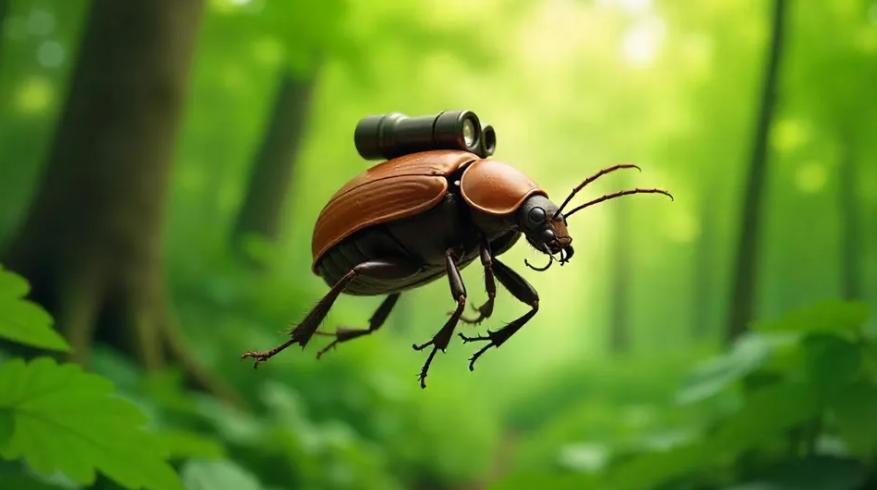
Scientists from Nanyang Technological University, Singapore, Osaka University and Hiroshima University have jointly developed an innovative swarm navigation algorithm that can effectively prevent robotic insects from getting stuck in complex terrain. The technological breakthrough, published in the journal Nature Communications, marks a major advance in the field of swarm robotics research and offers great prospects for applications such as disaster relief, search and rescue missions and infrastructure inspections.
First of all, these robotic insects are actually real insects, with tiny electronic devices on their backs, including sensors such as optical and infrared cameras, batteries and communication antennas. These devices allow scientists to remotely control the insects' movements for a variety of tasks. This technology is not new. Scientists have been studying how to remotely control insects through electronic devices for many years. For example, robotic cockroaches usually carry a tiny backpack containing electronic control equipment, batteries, sensors, and sometimes cameras. By connecting the insect antennae to electronic devices and stimulating the sensors with probes, scientists can guide the cockroaches to move in a specific direction.
However, previous control methods have been mainly limited to individual insects, although the possibility of large-scale modification of insects has been realized in the laboratory through robotic technology. But at this stage, it is not possible to control an entire insect swarm simultaneously. In practical applications, such as search and rescue missions in disaster areas, in order to track down survivors within 72 hours, it is necessary to use as many robotic insects as possible at the same time. Operating each insect individually is inefficient, and algorithms that send complex instructions to each insect individually have difficulty coordinating the group effectively.
Secondly, in response to this problem, a research team from Hiroshima University and Osaka University published a new study in Nature Communications, proposing an innovative way to solve the problem of controlling multiple robotic insects. The researchers designed a group navigation algorithm with a "leading insect" as the core. The control equipment of the leading insect can coordinate with the backpacks of other insects to lead the entire group. This method allows the robotic insects to cooperate dynamically, such as helping each other when overcoming obstacles or getting out of trouble. Through the algorithm, scientists only control the direction of the insects' movement, rather than precisely commanding their every step.
In addition, the algorithm allows insects to act autonomously in complex terrain. When faced with obstacles, the robotic insects can react quickly based on their own instincts, and this reaction speed is much faster than control systems that rely purely on computer logic. In experiments, this approach proved to be highly effective: the scientists reduced the need for repeated stimulation of the robotic insects by 50%, and dilemmas were discovered and solved more quickly.
Finally, there are many advantages to using robotic insects for search and rescue missions over traditional robots. Insects have extremely low energy consumption, and their movements are mainly based on their own muscles, rather than high-energy electric motors. In addition, the control electronics required for robotic insects are relatively simple, avoiding complex systems with high computing power. In future research, the scientists plan to further develop new algorithms to promote cooperative behavior in robotic insects. For example, they hope to achieve group cooperation to complete the joint transportation of large objects. The research team also plans to test and improve the existing algorithms in various real-world scenarios, including verifying their performance in complex environments such as rubble piles in disaster areas.
In summary, the goal of this joint research team is to make the group actions of robotic insects more coordinated, not only limited to simple movements, but also in complex collaborative tasks. Their ultimate goal is to provide more efficient and low-energy solutions for fields such as disaster relief, while further verifying the application potential of this technology in real environments. The success of this technology will not only promote technological progress in the field of robotic insects, but also open up new directions for solving various complex tasks.

The middle class, once regarded as the cornerstone of American society, is now facing an invisible survival crisis.
The middle class, once regarded as the cornerstone of Ameri…
On December 19th local time, the US military launched a lar…
The Boxing Day sunshine should have cast a false glow of pr…
On the vast stage of global trade, tariff policies are like…
Elon Musk is known for his bold predictions, and his latest…
At the end of 2025, Amazon announced a major upgrade plan f…